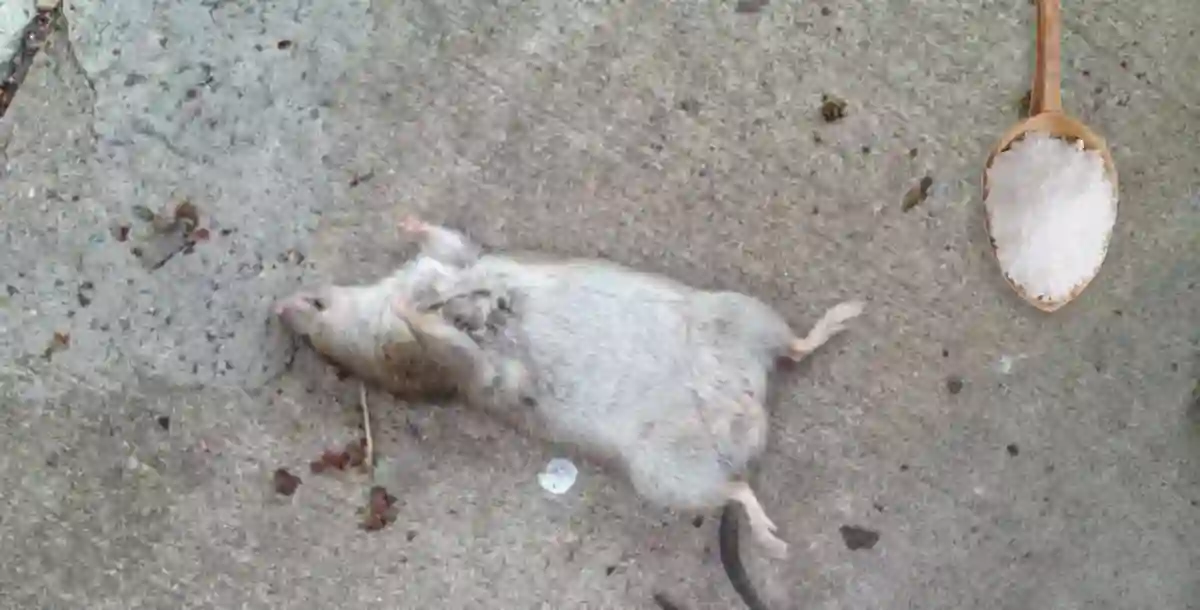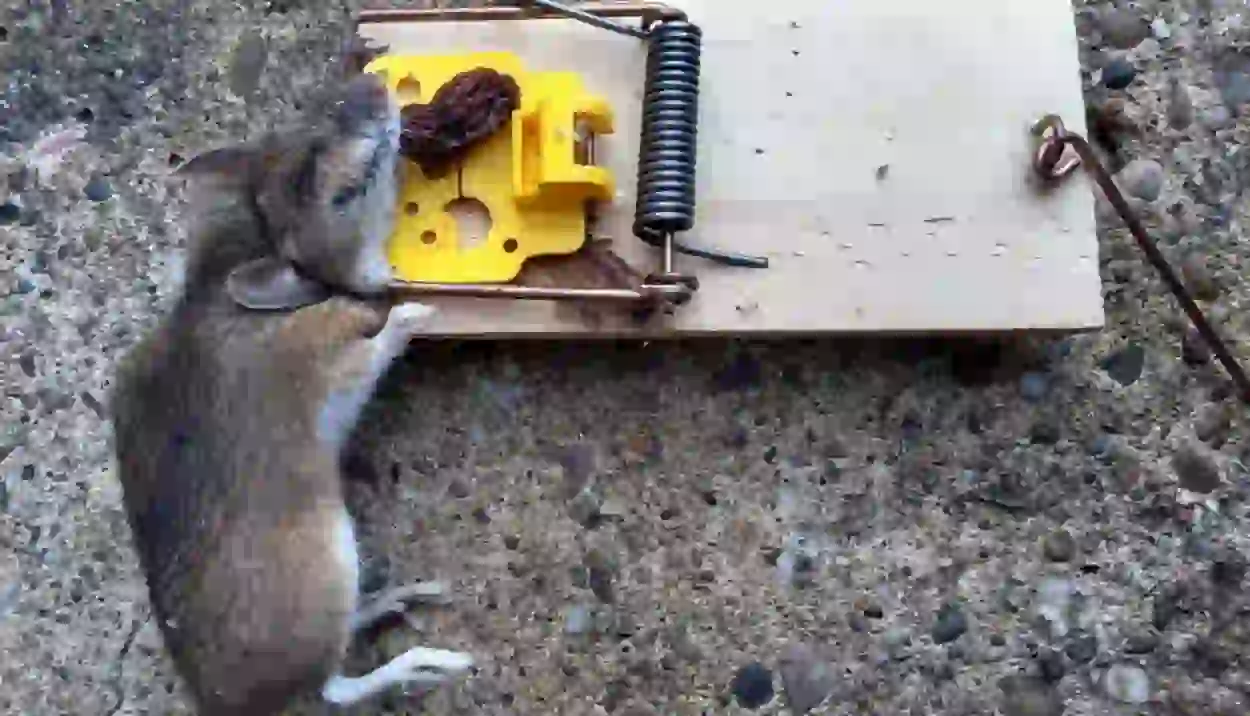If you discover that your kitchen has become an unwelcome home for small, scampering mice, and you suspect their presence inside your stove and oven, rest assured you’re not the only one. Mice are drawn to the cozy heat of the pilot light and the abundance of crumbs and leftover food debris in and around your oven. The good news: you can discourage their new-found hideout.
How to stop mice from getting in oven

You want the mice out of your oven ASAP. Below are the verified and safe steps to stop mice from getting in oven:
1. clean in and around your oven
In case you inadvertently become a host to tiny, scuttling rodents in your kitchen, with a strong suspicion of their activity within your stove and oven, know that this is a common issue.
Mice find the warmth provided by the pilot light and the ample supply of crumbs and residual food particles in and around your oven appealing.
To thoroughly inspect the area behind your oven, it is necessary to move it away from the wall. If your oven is gas-powered, you must first shut off the gas valve to safely disconnect the gas intake hose.
2. Pull out your oven
First, turn off the gas before pulling out your stove or oven. Carefully pull the stove away from the wall to identify the mice’s entry point.
You may find an evident mouse-sized hole (possibly as small as a dime) or other signs, such as scratch marks or droppings. Inspect behind sinks, close to pipes, and around one of the most frequent entryways – the stove’s gas intake hose.
3. Seal the entry points around your oven
A thorough inspection of the entire house is necessary to locate spaces where mice could be entering and exiting. Observe the areas they often visit to pinpoint potential entry points to help stop mice from getting in oven.
This can be achieved by:
- searching for droppings or marks indicating that mice have chewed on wood or other materials;
- examining the areas behind kitchen sinks and close to pipes for small gaps, and seal them using caulk or wire mesh; and
- covering the patched area with cardboard to prevent mice from interfering with the repair while it dries, and to deter them when they inevitably attempt to escape from the oven.
4. Set traps
After sealing all possible access points and eliminating food sources to stop mice from getting in oven, proceed with trapping to catch any residual mice.
Snap traps can be a successful method for capturing them. Set multiple snap traps baited with attractants like peanut butter or cheese along walls and areas where mice frequent. If they are drawn to your stove, position the traps along the wall behind it, where they may be traversing in search of food.
Regularly inspect the traps, dispose of any caught mice, and reset/re-bait as needed. Ensure traps are kept away from children and pets to prevent accidental harm.
Track any mice that manage to disappear from the glue traps to discover any additional hidden entry points,” they advise. However, what if you can’t see where they escaped from or follow them quickly enough?
And a more unsettling question: What if you’ve sealed all the holes and there are no more escape routes? What then? How do I cope with the guilt of mass mice extermination?
If the thought of removing scorched mice remains from your oven makes you uncomfortable, there is an alternative approach, proposed by my compassionate spouse who persistently inquired, “Why are you writing about this again?” Which, honestly, is a valid question.
In case you prefer not to act as a mouse investigator or risk having no remaining escape routes, intentionally leave one hole open. This way, when you turn up the heat, the mice will have a guaranteed escape path. Position your traps behind that exit point.
5. Call the professionals
Alternatively, if your infestation is severe enough and you’re prepared to invest some money to stop mice from getting in oven, hire a professional exterminator to address the issue for you.
Identifying and sealing all possible entry points that mice use to enter your home can be a daunting task. Allow professionals to assist you. Technicians can inspect your property and devise an appropriate plan to mouse-proof your home.
What can I put on my stove to keep mice away?
Mice aren’t welcome in anyone’s home, and you want to keep them out to avoid health risks and damage to your property. You could put any of the following in your oven or stove to keep mice away:
1. Mothballs
Mothballs are often used to keep mice from getting into ovens. They have a strong smell that mice don’t like, so they won’t go near them.
Mothballs are poisonous if people or animals eat them, so you’ll need to be extra careful if you have kids or pets in your home. You can put some mothballs on your stove, but make sure they are in a tight bag or container so they don’t touch anything.
2. Peppermint oil
Peppermint oil is another way to keep mice out of your oven that works well. Mice don’t like the smell of peppermint, so you can put the oil on the box or cotton balls and put them inside to stop mice from getting in oven.
You can also put a few drops of peppermint oil in a spray bottle with water and spray the solution around the oven area. Peppermint oil is safe for both people and pets, and it has a nice smell that will make your kitchen smell better.
3. Steel wool
Steel wool, on the other hand, is much harder for them to get through if placed next to the entry points you identified.
Use steel wool to fill cracks and holes in your kitchen. Wear gloves when you work with steel wool, because it can irritate your skin.
4. Bay leaves
Bay leaves are a natural way to keep not just insects but mice and other rodents away, and they are a good choice if you don’t want to use chemicals or oils with a strong smell. Place a few bay leaves in your kitchen to emit the strong smell that mice don’t like.
5. Baking soda
Baking soda is a useful home item that can be used for many things, like keeping mice out of your drawers.
Mix baking soda and sugar in equal amounts and put the mixture in a small dish inside your drawer.
Mice will come to the sugar, and if they eat the baking soda, it will kill them. This method works, but it’s important to keep pets and kids away from it because baking soda is dangerous if eaten in large amounts.
6. Mouse traps
If there are a lot of mice in your kitchen lurking around your oven, you may need to use mouse traps to get rid of them. There are different kinds of mouse traps, such as those that snap, stick, or use electricity. Snap traps are the most common and cheap choice. When a mouse walks into the trap, it snaps shut on the mouse. Electronic traps send a shock that kills the mouse. Make sure to put the traps in places where mice are likely to go, like along the walls or in the corners of your drawers. Glue traps are generally not effective.
Read also: do this to ban mice from your plants
How do mice get into the stove drawer?
Perhaps, you might be interested in how the mice got into your oven drawer in the first place.
Mice are known for being good at climbing and getting into small places. Together with the fact that they eat nonstop and are active at night, these things make them a common household pest that can cause problems in your kitchen and other rooms. The stove drawer is one of the most usual places to find mice in a kitchen.
Mice can get into the stove drawer in many ways, but there are a few that they use most often. Here are some ways mice might be getting into your stove drawer:
1. Through holes and cracks
Mice are known for being able to fit through the smallest holes and cracks. They can fit through holes as small as 1/4 inch in diameter.
This means that mice can easily get into the drawer if there are any holes or cracks in the back of your stove or around the drawer.
2. Through the stove vent
Most stoves have a vent on the back that lets air flow. Mice might be able to get in through this vent. If the vent isn’t sealed or closed properly, mice can get in through it and get into the drawer.
Mice are very good movers and can easily move up smooth surfaces. Mice can get into the drawer of your stove if it is next to a table or other flat surface.
Mice can smell food from a long way away because they have a great sense of smell. If you keep food in the drawer under the stove, mice might be able to smell it and get in.
3. Accidentally
Sometimes, mice just happen to find their way into the oven drawer. They might be looking around your kitchen and find an open drawer they can get into.
When mice get into your stove drawer, they can make all kinds of problems. They might chew on wires, insulation, and other things that could start a fire. They may also leave droppings and urine behind, which can get on your food and cooking surfaces and make them sick.






